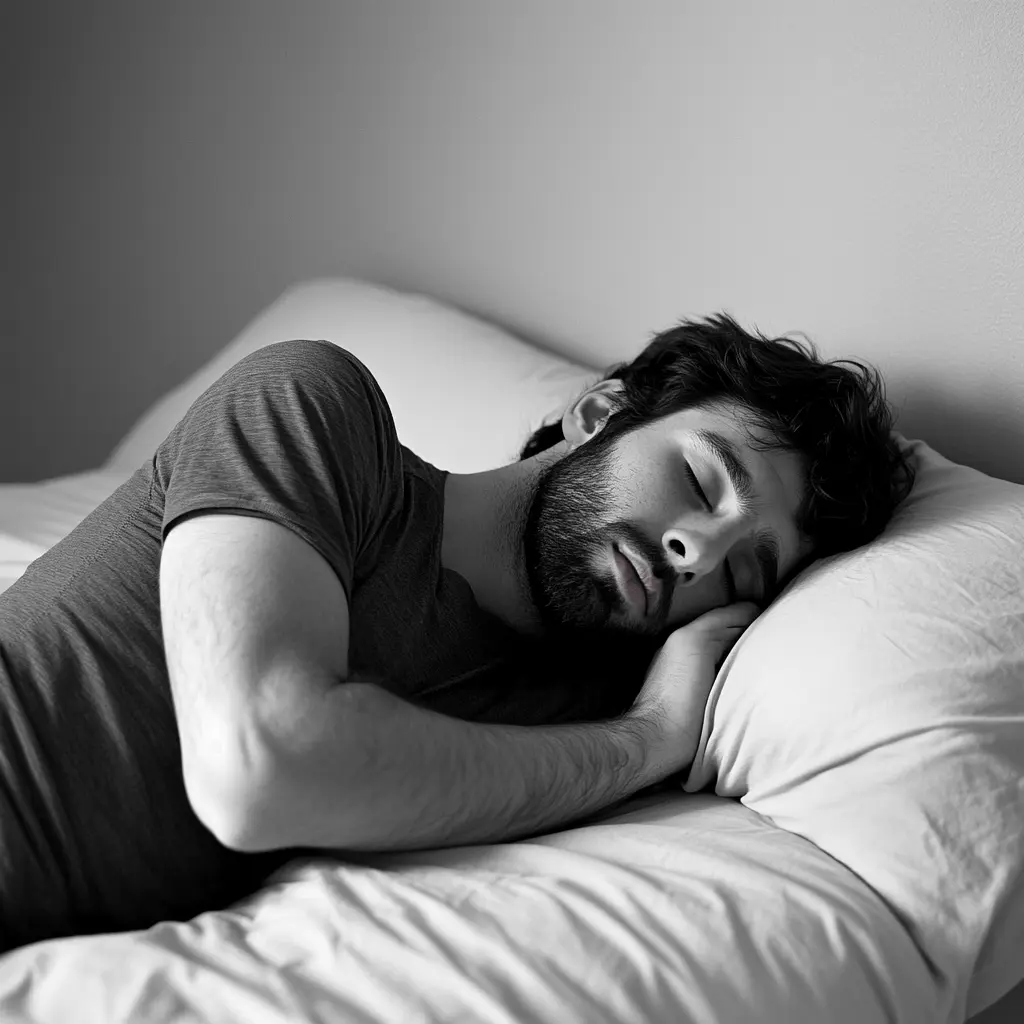If you’re dealing with IT band pain, getting a good night’s sleep can feel nearly impossible. The iliotibial (IT) band—a thick band of connective tissue that runs along the outside of your thigh—can become tight or inflamed due to overuse, poor movement mechanics, or muscle imbalances. While daytime discomfort is common, many people find that the pain intensifies or becomes more noticeable at night, especially when lying in certain positions.
The way you sleep can play a major role in either relieving or aggravating IT band syndrome. Fortunately, small adjustments to your sleep posture and bedtime routine can make a big difference in reducing pressure, promoting muscle recovery, and easing pain. In this post, we’ll explore the best sleeping positions for IT band pain, along with expert tips and nighttime strategies to help you rest comfortably and wake up feeling better.
Understanding IT Band Pain and Its Impact on Sleep
What Is the IT Band and Why It Hurts
The iliotibial (IT) band is a long, fibrous band of fascia that runs along the outside of your thigh—from the hip (tensor fasciae latae and gluteal muscles) down to the knee (lateral condyle of the tibia). Its main function is to help stabilize the hip and knee during movement, especially in activities like running, cycling, or walking.
IT band syndrome (ITBS) occurs when this tissue becomes tight, irritated, or inflamed—often due to repetitive stress, improper biomechanics, or muscle imbalances. Common contributors include weak glutes, tight quads, and poor hip or knee alignment.
This pain is typically felt on the outer part of the thigh or knee, and can flare up during or after physical activity. But for many people, IT band pain doesn’t stop when the activity ends—it continues at night, making it difficult to get quality sleep.
IT band syndrome occurs when the iliotibial band becomes tight or inflamed, often due to overuse, poor biomechanics, or muscular imbalances. This condition can lead to lateral knee pain, hip discomfort, and sleep disturbances, especially when lying on the affected side.
According to Johns Hopkins Medicine, IT band syndrome is a common injury among runners and active individuals, and its symptoms can worsen when not managed properly—affecting both daily activity and rest.
Pain from IT band irritation tends to flare up during positions that involve pressure on the outer thigh or hip misalignment, making it essential to adjust sleep posture and nighttime habits to avoid aggravating symptoms.
Symptoms of IT Band Syndrome at Night
IT band pain is more than just a daytime nuisance. When you lie down at night—especially on your affected side—you might experience:
- Aching or sharp pain on the outside of the knee or thigh.
- Tightness or throbbing sensations, particularly after an active day.
- Discomfort that worsens when pressure is applied, such as lying directly on the painful side.
- Restlessness or interrupted sleep, especially when rolling over or changing positions.
This discomfort is often due to the increased pressure on the inflamed IT band and surrounding tissues, as well as poor alignment of the hips and knees during sleep.
How Sleep Position Can Worsen or Help IT Band Pain
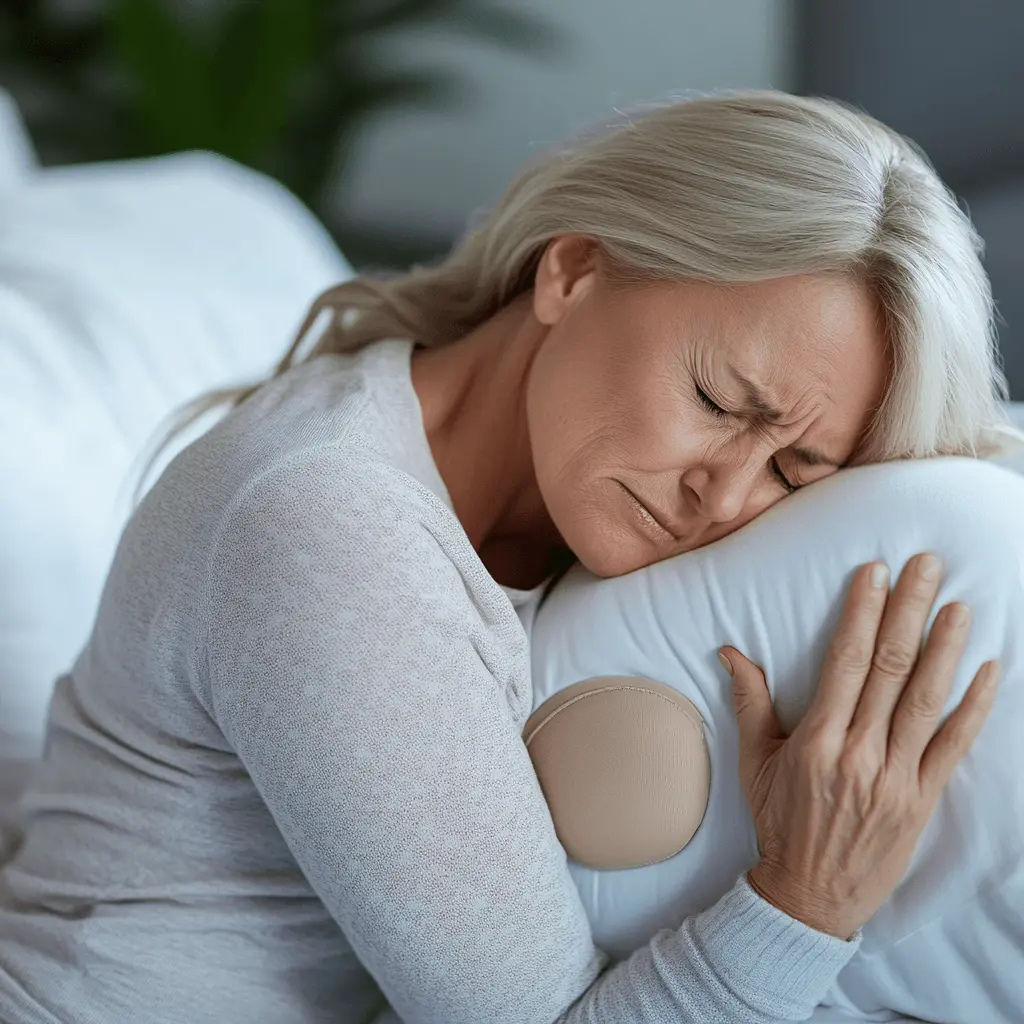
Your sleep posture has a direct impact on muscle recovery, joint alignment, and pressure distribution—all of which are crucial for managing IT band pain. Certain positions can compress the IT band, irritate inflamed tissues, or place the hip and knee in awkward angles that worsen tightness or inflammation.
For example:
- Sleeping on the affected side increases direct pressure on the irritated IT band.
- Sleeping with legs stacked or unsupported can cause hip and knee misalignment, worsening lateral tension.
- Improper spinal alignment may indirectly pull on the IT band through connected muscle chains.
On the flip side, sleeping in a position that promotes neutral alignment and pressure relief can:
- Reduce strain on the IT band.
- Promote circulation and healing.
- Prevent overnight stiffness or inflammation.
Understanding these dynamics is the first step toward choosing sleep positions that aid recovery instead of hindering it.
Best Sleeping Positions for IT Band Pain Relief
Sleeping on Your Back with Leg Support
Sleeping on your back is one of the most recommended positions for IT band pain, as it helps maintain neutral spine alignment and minimizes pressure on the outer thigh. To maximize comfort and support:
- Place a pillow or rolled-up towel under your knees. This slight elevation reduces tension on your hip flexors and IT band by allowing your lower back and pelvis to rest in a more natural position.
- Use a thin pillow under your head to avoid neck strain and keep the spine aligned from top to bottom.
- Avoid crossing your legs or letting your feet roll outward, as this may cause subtle hip rotation that stresses the IT band.
This position reduces lateral compression and supports proper circulation, allowing the IT band and surrounding muscles to relax and recover during sleep.
Side Sleeping with a Pillow Between the Knees
Side sleeping can be a good option—but only when done on the non-affected side. Lying on the painful side places direct pressure on the inflamed IT band, often worsening symptoms.
To optimize side sleeping for IT band pain relief:
- Sleep on the opposite (pain-free) side to reduce compression.
- Place a firm pillow between your knees to keep your hips, pelvis, and spine aligned. This prevents the top leg from pulling downward and straining the IT band and gluteal muscles.
- Consider using a body pillow for added support to your upper body and to prevent rolling onto your painful side during the night.
This position helps avoid hip internal rotation and keeps the knees from collapsing together, which can tug on the IT band and exacerbate pain.
Avoid Sleeping on the Affected Side
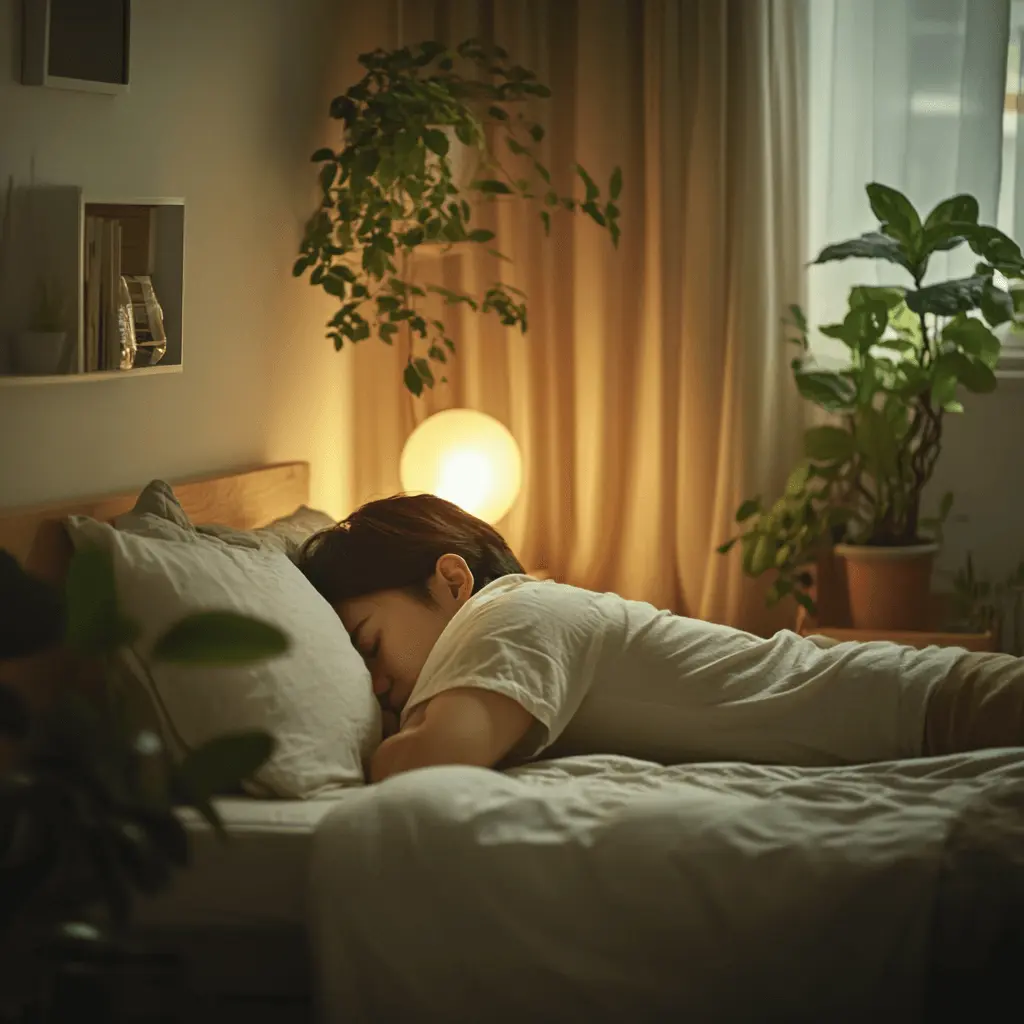
While it might seem obvious, many people instinctively sleep on their preferred side—even if it’s the one causing pain. Unfortunately, this habit can worsen inflammation and prolong healing.
Here’s why sleeping on the affected side is problematic:
- It applies direct pressure to the irritated IT band.
- It can tighten surrounding muscles (like the TFL or gluteus medius), especially without proper support.
- It often causes misalignment in the hips and spine, contributing to chronic tension.
If you’re a side sleeper by habit, try placing a pillow behind your back to gently prevent rolling during sleep.
Elevated Leg Position
Raising your legs slightly can help reduce inflammation and swelling, especially after a day of walking, standing, or physical activity that aggravated the IT band.
Try these tips:
- Place a pillow or wedge under your knees or calves while sleeping on your back.
- If lying on your side, slightly elevate the top leg by placing a pillow beneath the thigh, not just the knee.
- Elevation promotes venous return and lymphatic drainage, which helps reduce overnight stiffness and discomfort.
Just make sure not to overdo the elevation—your knees should stay slightly bent and relaxed to avoid creating new pressure points.
Each of these sleep positions can make a big difference in managing IT band syndrome. The key is to focus on alignment, pressure relief, and consistency to support your body’s natural healing process overnight.
Pre-Bedtime Tips to Ease IT Band Pain
While sleeping in the right position can make a big difference, your bedtime routine plays an equally important role in managing IT band pain. Incorporating specific habits before sleep can help relax tight muscles, reduce inflammation, and prepare your body for restful, pain-free sleep.
Gentle IT Band and Hip Stretches
Stretching the muscles surrounding the IT band—like the glutes, quads, hamstrings, and tensor fasciae latae (TFL)—can ease tension and reduce nighttime discomfort.
Here are some effective pre-sleep stretches:
- Standing IT band stretch: Cross one leg behind the other and lean sideways until you feel a stretch along the outer thigh and hip.
- Figure-4 stretch (lying or seated): Loosens up the piriformis and glutes, which can contribute to IT band tension.
- Reclined spinal twist: Gently rotates the lower back and hips, helping reduce lateral tension through the IT band pathway.
Hold each stretch for 20–30 seconds and avoid bouncing. The goal is to relax, not push your range of motion.
Foam Rolling Before Bed (With Caution)
Foam rolling can be helpful when used gently and targeted toward supporting muscles rather than directly on the IT band itself.
Tips for foam rolling effectively:
- Focus on the glutes, quads, hamstrings, and TFL. These muscles can pull on the IT band when they’re tight.
- Avoid aggressively rolling directly on the IT band, which may increase irritation rather than reduce it.
- Use slow, controlled motions, and pause on any tight or tender spots to allow the tissue to release.
Foam rolling for 5–10 minutes before bed can increase blood flow, reduce muscle tightness, and help prevent overnight stiffness.
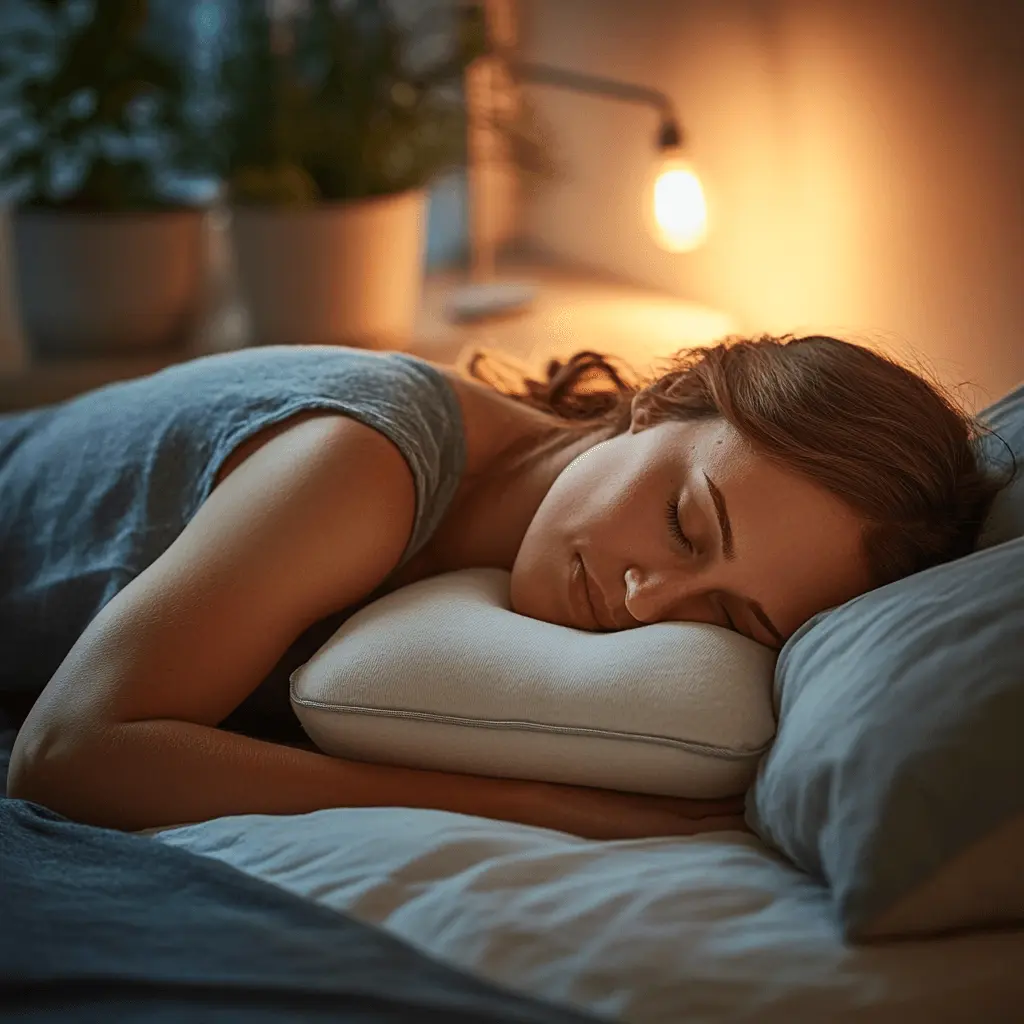
Warm Compress or Epsom Salt Bath
Heat therapy before bed helps relax tense muscles, promote circulation, and ease pain, especially if inflammation isn’t acute or severe.
Here are two calming options:
- Warm compress: Apply a heating pad or warm towel to the outer thigh or hip for 15–20 minutes.
- Epsom salt bath: Soaking in a warm bath with Epsom salts helps your body absorb magnesium, which can calm nerve activity and relieve muscle soreness.
These methods not only target physical tension, but also activate the parasympathetic nervous system, promoting deeper, more restorative sleep.
Incorporating these pre-bedtime practices into your nightly routine can significantly improve how your body feels when you lie down—and how well you sleep through the night. Think of it as a way to decompress both your body and your mind for better recovery.
Sleep Accessories to Support IT Band Recovery
While posture and pre-bed routines are critical, the sleep accessories you use can make a big difference in reducing IT band pain and supporting recovery. From specialized pillows to supportive mattresses, the right gear helps maintain proper alignment, minimizes pressure, and improves overall sleep quality.
Orthopedic Pillows and Leg Elevation Tools
Orthopedic pillows are designed to support the natural curves of your body and reduce strain on joints and muscles. For those with IT band pain, leg and hip alignment is key.
Consider the following tools:
- Knee pillows: Placed between the knees when side sleeping, these keep your hips aligned and prevent your top leg from rotating inward, which can irritate the IT band.
- Wedge pillows: Great for back sleepers, wedge pillows elevate the legs slightly, helping to reduce inflammation and tension along the thigh and knee.
- Body pillows: A full-length pillow allows you to hug one part while placing the lower part between your knees, promoting full-body alignment and reducing the tendency to roll onto your painful side.
These accessories can offload pressure from the outer thigh, keep the spine neutral, and make it easier to stay in a pain-free position throughout the night.
Firm vs. Soft Mattress Considerations
Your mattress has a direct impact on how well your body stays aligned during sleep. A mattress that’s too soft can cause your hips to sink, throwing off alignment, while a mattress that’s too firm may increase pressure on your outer hip and thigh—where IT band pain is most felt.
Here’s how to choose the right one:
- Medium-firm mattresses generally offer the best balance of support and comfort for IT band pain sufferers.
- Memory foam or latex mattresses contour to your body and relieve pressure points while maintaining spinal alignment.
- Consider a mattress topper if your current mattress is too firm or uneven—it can make a big difference without needing a full replacement.
The goal is to ensure your hips, knees, and spine remain in a neutral, supported position all night, especially when side or back sleeping.
Body Pillows for Side Sleepers
If you’re a side sleeper (especially on the non-affected side), a body pillow can be a game-changer. It helps you:
- Maintain consistent alignment by keeping the shoulders, hips, and knees in line.
- Prevent hip internal rotation, which can pull on the IT band.
- Provide support to both upper and lower body, reducing strain on the glutes, TFL, and IT band.
Bonus tip: Hugging a body pillow while placing part of it between your knees not only helps with alignment but also minimizes movement during sleep, reducing the chance of rolling into a painful position.
With the right combination of supportive accessories, you can significantly reduce pressure, stabilize your posture, and enhance your overall sleep environment—making each night a step toward healing.
When to Seek Professional Help
While adjusting your sleep position and routine can offer significant relief for IT band pain, there are cases where home remedies and lifestyle changes aren’t enough. Knowing when to consult a professional can help you prevent long-term discomfort, chronic inflammation, or further injury.
Chronic IT Band Pain That Disrupts Sleep
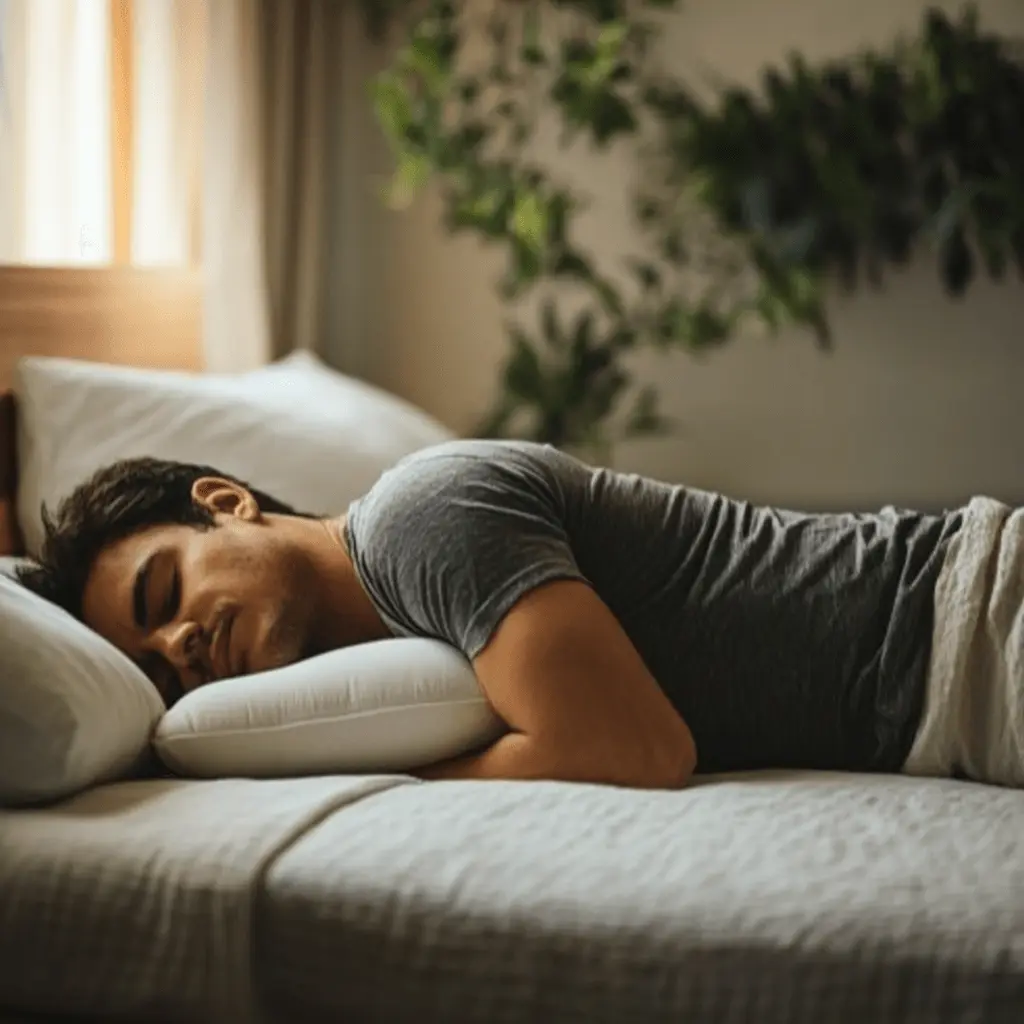
If you’ve made changes to your sleeping posture, incorporated stretching, and used supportive accessories—but you’re still waking up in pain—it may be a sign that the issue is more complex than a tight IT band.
Signs it’s time to get help:
- Persistent pain that lasts more than 2–3 weeks, even with rest and stretching.
- Pain that worsens at night or disrupts your sleep on a regular basis.
- Increased discomfort during daily activities such as walking, squatting, or climbing stairs.
- Sensations like numbness, tingling, or burning, which may indicate nerve involvement or referred pain from another source.
Chronic IT band syndrome can lead to compensatory movement patterns, affecting your hips, lower back, and knees—so don’t ignore it if it’s affecting your quality of life.
Consulting a Physical Therapist or Orthopedic Specialist
A licensed physical therapist (PT) or orthopedic doctor can accurately assess the root cause of your IT band pain and provide personalized treatment beyond what general advice can offer.
Here’s what to expect:
- A biomechanical assessment to evaluate hip stability, leg alignment, gait, and muscle imbalances.
- A tailored rehabilitation plan involving targeted stretching, strengthening exercises (e.g., glute med, TFL), and mobility drills.
- Hands-on therapies such as manual release, dry needling, or instrument-assisted soft tissue mobilization (IASTM).
In more advanced cases, an orthopedic specialist may order imaging (MRI or ultrasound) to rule out more serious conditions like bursitis, tendinopathy, or meniscal involvement.
Treatment Options Beyond Sleep Adjustments
If posture changes and home care aren’t enough, a professional may recommend other therapeutic interventions, including:
- Corticosteroid injections to reduce localized inflammation around the IT band.
- Prescribed anti-inflammatory medications for persistent pain.
- Taping or bracing to offload pressure and retrain alignment.
- Massage therapy focused on the hips, glutes, and lateral thigh muscles.
- Strengthening programs for long-term correction of the movement patterns contributing to IT band stress.
In very rare and severe cases, surgical intervention might be considered—but this is typically a last resort after months of conservative treatment.
By seeking timely professional guidance, you can accelerate your recovery, avoid long-term damage, and ensure that your IT band pain doesn’t become a chronic sleep-disrupting issue. Don’t hesitate to reach out to a specialist—especially if your symptoms are interfering with both your daily function and nighttime rest.
Dealing with IT band pain can be frustrating—especially when it interferes with your ability to sleep and recover. But with the right approach, nighttime doesn’t have to be painful. By choosing the best sleeping positions, using supportive pillows and sleep accessories, and incorporating pre-bedtime stretches and self-care routines, you can significantly reduce discomfort and promote healing.
Remember, consistency is key. Small changes to your posture and environment can lead to big improvements over time. And if your pain persists or worsens, don’t hesitate to consult a healthcare professional for personalized treatment.
Prioritize comfort, alignment, and recovery—because a good night’s sleep is one of the most powerful tools in overcoming IT band syndrome.


